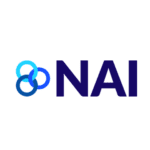Why Track KPIs?
In the dynamic and competitive world of the food and beverage industry, staying ahead of the curve requires careful monitoring of various performance metrics, and that means keeping track of the key food and beverage industry KPIs. Key Performance Indicators (KPIs) serve as vital tools for evaluating the health of a business, identifying areas for improvement, and making informed strategic decisions. In this blog, we will explore the essential KPIs that drive success in the growing food and beverage industry.
Sales Revenue and Growth
Sales revenue is the cornerstone of any business. Tracking your sales revenue allows you to understand your market share, customer preferences, and overall business performance. Monitoring growth over time provides insights into the effectiveness of your sales strategies and the impact of market trends on your business.
Cost of Goods Sold (COGS) and Gross Margin
COGS represents the direct costs of producing the goods sold. Calculating your COGS and comparing it to your sales revenue reveals your gross margin – the difference between revenue and COGS. Maintaining a healthy gross margin is crucial, as it reflects your profitability before accounting for other operating expenses.
Inventory Turnover
Inventory turnover measures how efficiently you are managing your inventory. It’s the ratio of the cost of goods sold to the average inventory value during a specific period. High turnover suggests effective inventory management, reducing the risk of waste and obsolescence, while low turnover may indicate overstocking or inefficient sales.
Customer Satisfaction and Retention
Customer satisfaction directly impacts your business’s reputation and future revenue. Utilize customer feedback, surveys, and reviews to gauge their experience. High customer satisfaction often leads to repeat business, positive word-of-mouth marketing, and increased brand loyalty.
Food Safety and Compliance Metrics
In the food and beverage industry, maintaining rigorous food safety standards is paramount. Track compliance with regulations, such as HACCP (Hazard Analysis and Critical Control Points), to ensure the quality and safety of your products. Monitoring incidents, recalls, and inspections can help you identify potential issues and take corrective actions.
Waste and Sustainability Metrics
Reducing waste and embracing sustainable practices not only benefit the environment but can also improve your bottom line. Track metrics like waste diversion rate, energy consumption, and water usage to demonstrate your commitment to sustainability while potentially cutting operational costs.
Labor Productivity and Efficiency
Labor costs are a significant portion of operational expenses in the industry. Measure metrics such as labor cost as a percentage of revenue, labor hours per unit produced, and employee turnover rate. Optimizing labor efficiency while maintaining a motivated workforce can positively impact your business’s financial health.
Menu and Product Performance
For restaurants and cafes, tracking the performance of individual menu items can guide decisions about pricing, promotions, and menu adjustments. Analyzing which items are most popular, have the highest margins, or need improvements helps in maximizing profitability.
Supplier Performance
Reliable suppliers are crucial for maintaining consistency in product quality and timely deliveries. Measure supplier metrics like on-time delivery rates, quality assurance, and cost fluctuations to ensure that your supply chain remains robust.
Return on Investment (ROI) for Marketing Campaigns
Efficiently allocating marketing resources is essential. Analyze the ROI for various marketing initiatives, such as social media campaigns, special events, and loyalty programs. Identifying which strategies generate the highest returns can guide your future marketing decisions.
In conclusion, understanding and effectively utilizing key food and beverage industry KPIs is essential for any business aiming to thrive in this dynamic and competitive landscape. These KPIs serve as the compass that guides decision-making, strategy formulation, and performance evaluation within the industry. By closely monitoring metrics such as production efficiency, inventory turnover, customer satisfaction, and cost of goods sold, companies can fine-tune their operations and stay aligned with their goals.
Interested in learning more?




